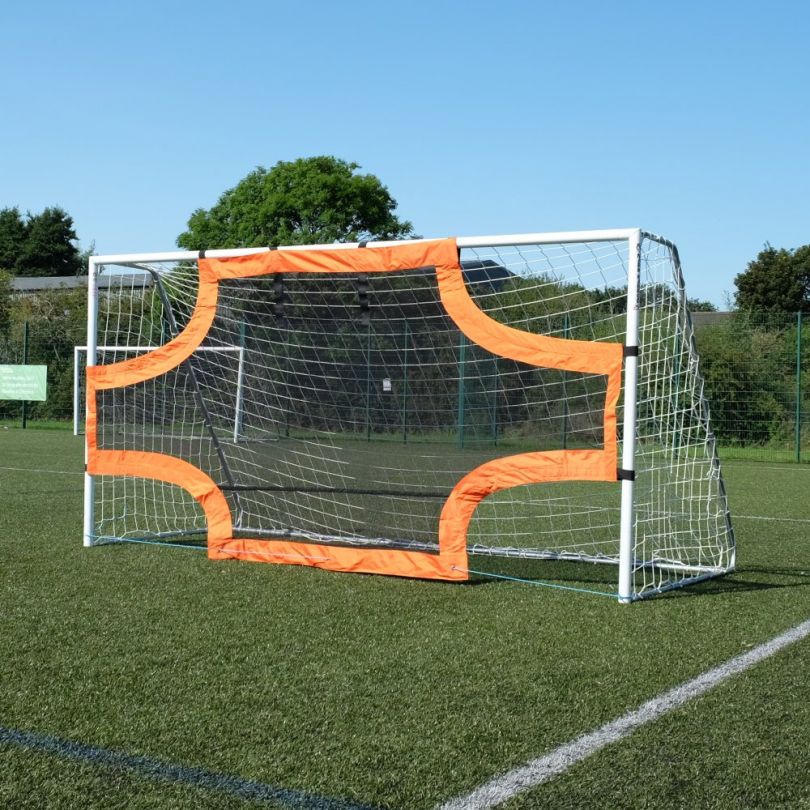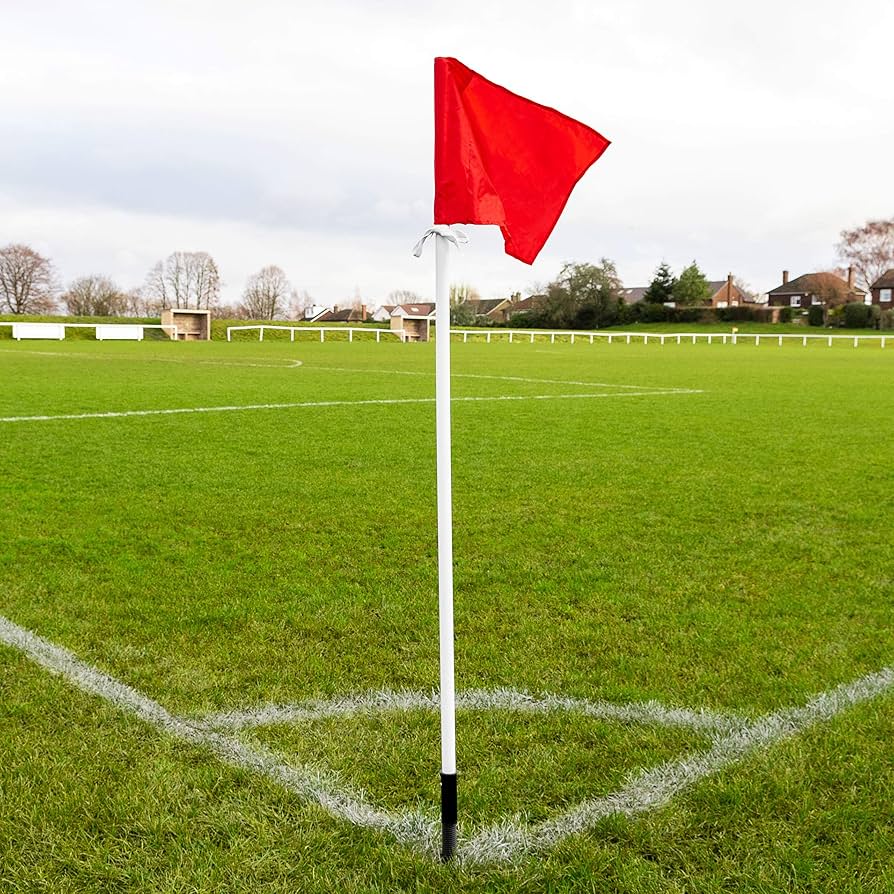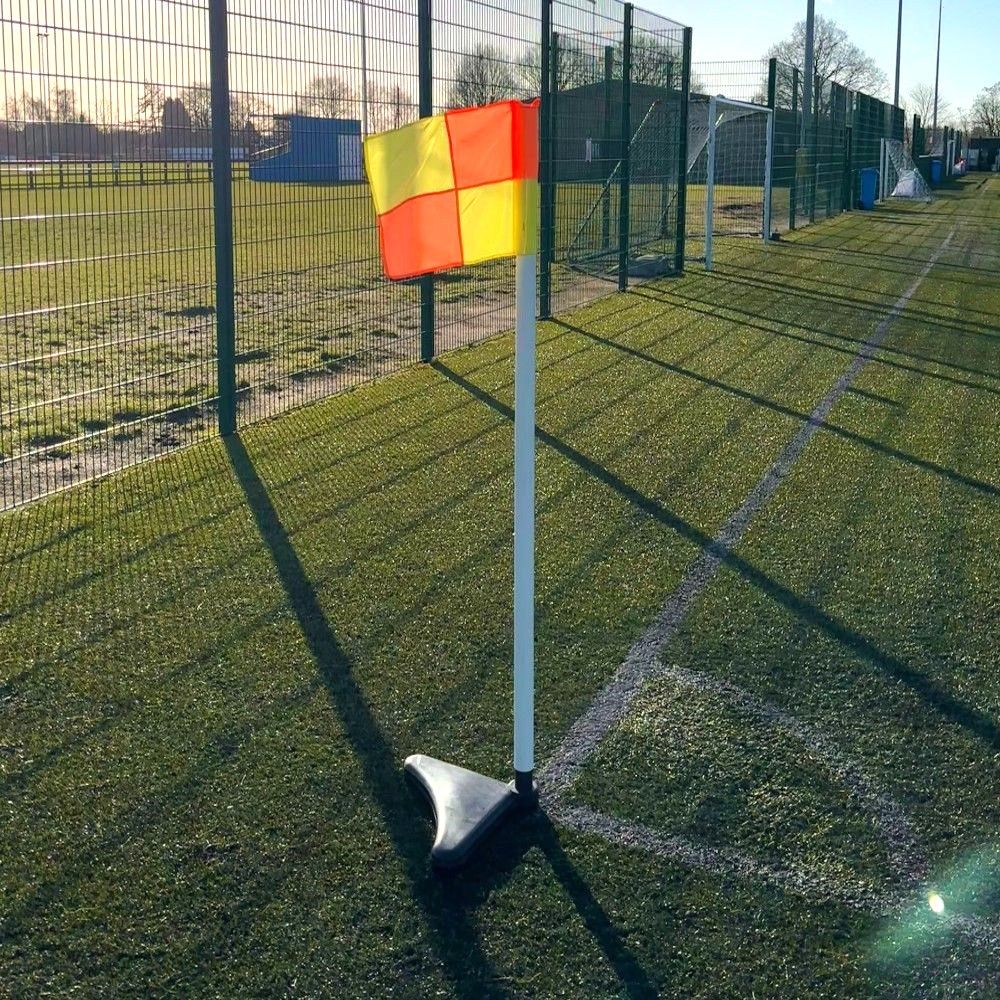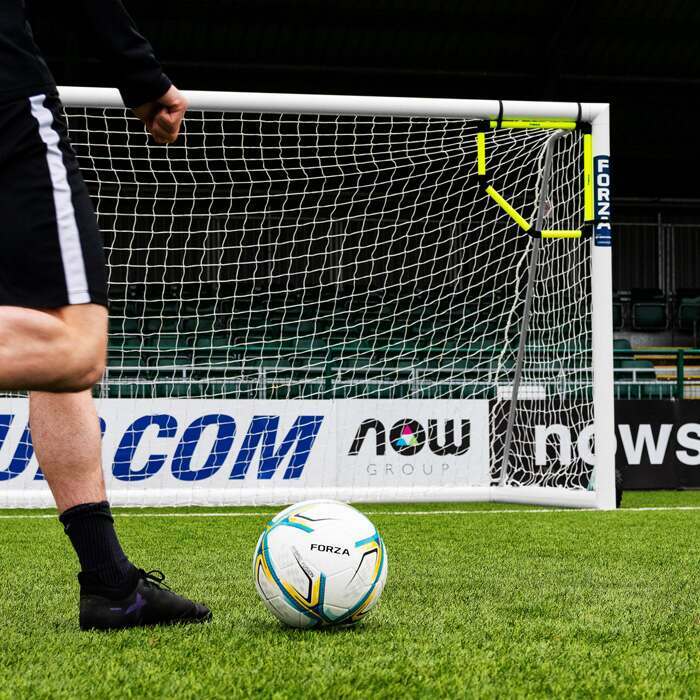I. Understanding the Basics of a Corner Kick

A. Definition and Execution
In football, a corner kick is awarded to a team when the ball crosses the goal line after being last touched by a defending player. This set-piece is taken from the corner arc of the pitch nearest to where the ball went out of play. The corner kick is executed by a member of the attacking team, and the ball is placed inside the corner arc. The player then kicks the ball into play, aiming to deliver it into a strategic area in front of the opposition’s goal.
The corner kick offers an opportunity for an attacking team to create goal-scoring chances from a set-piece situation. The ball is delivered into the penalty area, allowing teammates to attempt headers or shots on goal. The execution of a corner kick requires precision and strategic planning, as it can be a crucial element in a team’s attacking arsenal.
B. Importance in Attacking Strategy
Corner kicks are a vital component of a team’s attacking strategy. They provide a prime opportunity for a team to create goal-scoring chances, as the delivery of the ball into the penalty area sets the stage for attacking players to capitalize on potential opportunities. A well-executed corner kick has the potential to lead to a goal, making it an essential aspect of a team’s attacking game plan.
The strategic importance of corner kicks is further emphasized by their role in breaking down stubborn defenses. When facing a well-organized defensive line, teams often rely on set-piece opportunities such as corner kicks to unlock the opposition’s defense and create goal-scoring opportunities. Consequently, the ability to capitalize on corner kicks can significantly influence the outcome of a football match.
II. The Tactical Role of Corners in Football Matches
A. Utilizing Corners for Goal-Scoring Opportunities
In football matches, teams strategically utilize corner kicks to create goal-scoring opportunities. The delivery of the ball into the penalty area from a corner kick allows attacking players to position themselves to attempt headers or shots on goal. Teams often employ specific set-piece routines and plays designed to maximize the effectiveness of their corner kicks, aiming to exploit defensive vulnerabilities and create clear goal-scoring chances.
Furthermore, the tactical significance of corner kicks extends beyond the immediate goal-scoring opportunity. Successful execution of a corner kick can apply pressure to the opposing team’s defense, leading to goal-scoring opportunities from subsequent plays, rebounds, or defensive errors. As a result, corner kicks play a fundamental role in a team’s overall attacking strategy and can be critical in determining the outcome of a match.
B. Defending Against Opposition Corners
On the defensive side, teams must develop effective strategies to counter opposition corner kicks. Defending against corner kicks requires disciplined positioning, aerial prowess, and swift clearance of the ball from the penalty area. Additionally, defensive players must be vigilant in marking opposition attackers to prevent them from capitalizing on goal-scoring opportunities created from corner kicks.
Teams often adopt zonal marking or man-to-man marking systems to defend against opposition corner kicks, aiming to nullify the attacking threat and prevent goals. The ability to successfully defend against corner kicks is crucial in maintaining a team’s defensive solidity and preventing the opposition from gaining an advantage in the match.

III. Notable Moments and Strategies Involving Corner Kicks
A. Memorable Goals from Corner Kicks
Corner kicks have been the source of numerous memorable goals throughout the history of football. One notable example is Diego Maradona’s famous goal from a corner kick during the 1986 FIFA World Cup. With impeccable precision, Maradona delivered a curling corner kick that bypassed the entire English defense and found the head of teammate Jorge Burruchaga, resulting in a crucial goal for Argentina. This iconic moment not only showcased the potential for spectacular goals from corner kicks but also highlighted the strategic impact of precision delivery and effective aerial play.
Another unforgettable goal from a corner kick occurred during the UEFA Champions League final in 1999. Manchester United’s dramatic comeback victory against Bayern Munich was sealed with a corner kick delivered by David Beckham. This perfectly placed corner kick met the head of Teddy Sheringham, leading to an equalizing goal late in stoppage time. Subsequently, Ole Gunnar Solskjaer scored another goal from a corner kick, securing Manchester United’s historic win. This poignant moment underscored the crucial role of corner kicks in determining the outcome of high-stakes matches.
B. Innovative Set-Piece Plays and Tactics
In addition to memorable goals, football teams have employed innovative set-piece plays and tactics involving corner kicks. One such tactic is the “short corner,” where instead of crossing the ball into the penalty area directly, the team opts for a quick, short pass to a nearby player. This unorthodox approach aims to catch the opposition off guard, create space for a better crossing opportunity, or spark a different type of attacking play.
Another innovative tactic involves the use of decoy runs and strategic positioning during corner kicks. Teams often employ intricate set-piece routines that involve players making deceptive movements to confuse the opposition’s defense, enabling a designated player to find space and receive the ball in a favorable position for a shot on goal. These well-rehearsed and creative set-piece plays illustrate the tactical nuances of corner kicks and their potential to unlock opposing defenses.
IV. Statistical Analysis of Corner Kicks in Professional Football
A. The Frequency and Success Rate of Corner Kicks
Statistical analysis of corner kicks in professional football has revealed insights into their frequency and success rate. On average, a team receives approximately 5 to 6 corner kicks per match, underscoring the significance of these set-piece opportunities in the overall flow of the game. However, the success rate of converting corner kicks into goals is relatively modest, with estimates indicating that only around 3-4% of corner kicks result in goals across various football leagues.
Furthermore, statistical analysis has demonstrated variations in the success rate of corner kicks based on different factors, such as the delivery of the ball, the aerial prowess of players, and the defensive organization of the opposition. Teams often seek to capitalize on these set-piece opportunities by maximizing their chances of success through effective delivery and positioning, emphasizing the strategic importance of corner kicks in professional football.
B. Impact on Match Outcomes
The impact of corner kicks on match outcomes has been a subject of statistical and analytical study in professional football. Research has indicated that goals scored from corner kicks can significantly influence the results of matches, often serving as pivotal moments in determining the final scoreline. Additionally, the ability to defend against opposition corner kicks is crucial in maintaining a team’s defensive solidity and preventing the opposition from gaining an advantage in the match.
In-depth statistical analysis has further revealed that teams with a higher frequency of corner kicks tend to have a greater chance of winning matches. This correlation underscores the strategic importance of corner kicks in shaping the dynamics and outcomes of football matches at the professional level. Consequently, teams and coaching staff often place emphasis on refining corner kick strategies and set-piece routines to optimize their potential impact on match results.
V. Training and Preparation for Effective Corner Taking
A. Technical Skills and Specialized Training
The execution of a successful corner kick in football requires a combination of technical skills and specialized training. Players designated to take corner kicks must develop proficiency in various aspects of their technique, including striking the ball, delivery accuracy, and the ability to generate favorable trajectories for the ball. Specialized training programs often focus on refining these technical skills through targeted exercises and drills.
To deliver an effective corner kick, players must master the art of striking the ball with precision and power. This involves developing a consistent and reliable technique when making contact with the ball, ensuring that the delivery is accurate and conducive to creating goal-scoring opportunities for their teammates in the penalty area. Furthermore, specialized training may also encompass practicing different types of corner kick deliveries, such as in-swinging and out-swinging kicks, to provide a versatile and unpredictable attacking threat.
In addition to technical skills, specialized training for effective corner taking involves honing the ability to deliver the ball with optimal trajectory and pace. This aspect of the training focuses on developing the capacity to generate flight paths that facilitate controlled aerial play and increase the likelihood of scoring opportunities from corner kicks. Consequently, players dedicate significant practice time to perfecting the technical intricacies of their corner kick delivery, seeking to enhance their overall effectiveness in providing goal-scoring chances for their team.
B. Coordination and Positioning on Set Pieces
Coordination and positioning are integral components of training and preparation for effective corner taking in football. Players and teams engage in strategic training sessions to coordinate movements, plan set-piece plays, and position themselves optimally during corner kick situations. This meticulous preparation aims to maximize the potential for goal-scoring opportunities and defensive organization, underlining the tactical significance of coordination and positioning on set pieces.
Effective coordination during corner kicks involves synchronized movements and designated roles for players within the attacking team. Training sessions often focus on refining these coordinated movements, which can include decoy runs, offensive positioning, and precise timing to ensure that players are strategically placed to capitalize on the delivery of the corner kick. Furthermore, defensive organization is also emphasized, as players must adhere to designated positional responsibilities and marking assignments to effectively defend against opposition corner kicks.
Training for effective corner taking also encompasses the development of well-rehearsed set-piece routines and plays. These tactical maneuvers are meticulously designed and practiced to create advantageous situations from corner kicks, enabling players to exploit defensive vulnerabilities and generate goal-scoring opportunities. Tactical implementation, coordination, and positioning during set pieces are fundamental aspects of the training and preparation for effective corner taking, providing a strategic advantage for teams in the attacking and defensive phases of the game.
In conclusion, corner kicks are an integral aspect of football matches, carrying both attacking and defensive significance. The execution and strategic utilization of corner kicks can greatly impact a team’s ability to create goal-scoring opportunities, while defending against opposition corners is essential in maintaining defensive resilience. As such, the tactical role of corner kicks in football matches highlights their importance in shaping the flow and outcome of the game.



